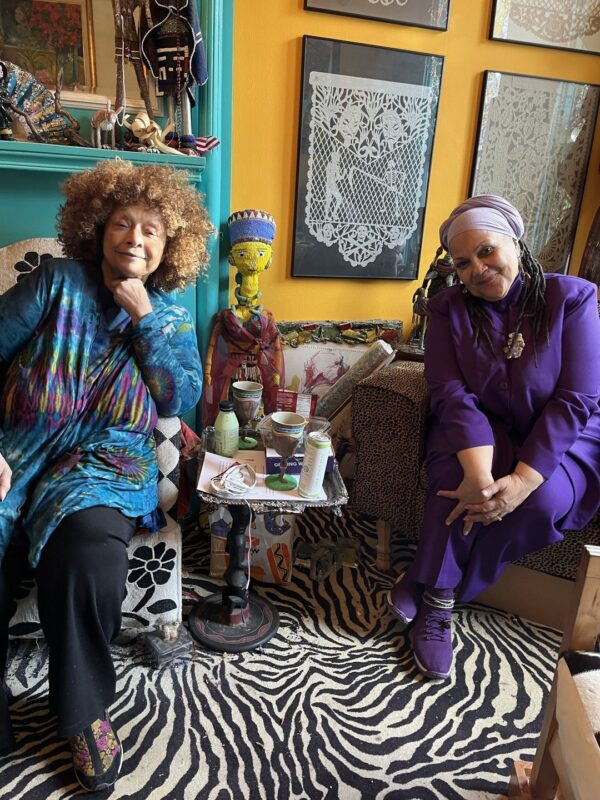I did not think I would be in this situation. I did not think I’d be on this side of the table. I did not think I’d be the one looking skeptically over my glasses at an annual budget asking questions like “What’s the likelihood we get this grant?” and “Who’s your contact at that foundation, I’ll talk to them” and “Does that go back to the mission? I want to challenge you to think about that.”
Being a board member for three small but formidable Baltimore theatre companies (and not acting in any plays) was simply not the plan. Until, of course, it was. In my salad days, I was on the other side of the table, the weary arts administrator nervously defending my calculations while simultaneously and defiantly pushing back against authority. What do a bunch of old white people know about the work I’m doing anyway?
When I left my longtime post at Single Carrot Theatre in Baltimore City four years ago to be a beach-bumming writer in Southern California I had no idea that a year later I’d be back in Baltimore. Turns out Southern California sucks. There are not enough sidewalks or Black people, and proximity to both is the only way I can breathe. So I came back, but I told myself I could not sink right into my old life. If you go back, for the love of god, do something.
I knew right away that “something” related to what had long been my personal manifesto: Boards need to diversify. What does that mean anyway? When we talk about diversity we’re supposed to be talking about more than just race, but in our beautiful city that’s 63 percent Black—one of the Blackest metropolitan areas in America—isn’t it, like, kinda mostly about race?
The diversification of boards is more than holding up a mirror to the city, but why don’t more boards include members of the community the organization actually aims and claims to serve?
When, in the summer of 2017, the Baltimore Museum of Art added two Black artists to their board, Amy Sherald and Adam Pendleton (Sherald of Michelle-Obama-portrait fame and Pendleton you may know from what seems to be literally any gallery or museum, including the BMA), I was intrigued. And then I was frustrated that I found it intriguing that Black artists have been included on the board of trustees at the art museum in a Black city. (According to the BMA, the only other Black artist board member was Tonya Ingersoll, daughter of Eddie and Sylvia Brown, who served on the board from 2008-2013.)
When I spoke with BMA Director Christopher Bedford about his board and its new additions, he was not shy about his feelings on the topic. “I think [having artists on the board] is invaluable because, at the risk of stating the obvious, art and artists are the center of the museum,” he said. “To have them in the room when major decisions are made adds immeasurably to the discourse and it brings the core of who we are and what we do to the big table.”

When I asked him how important racial diversity—and particularly a Black presence—on the board is to him, he acknowledged the inevitable impotence of a lily-white board, and stressed the significance of representing non-white artists as well. “The most creative groups are not homogenous. There is no way to overestimate the importance of relentlessly pursuing diversity in creative contexts. It’s inadequate, and in fact unethical, to have those presenting and curating be [predominantly] white when the creative program itself is primarily of color.”
I paused on the other end of the line, a little taken aback that he’d used real words like “relentless” and “inadequate”—it seemed to me like an urgent call to action for himself and the artistic community, on a holistic level. I hung up the phone with the impression that one of the largest local arts organizations had actually made a decision to make a change and done something about it. A start, perhaps?
The BMA isn’t the only one making an effort. Over at my alma mater, Single Carrot’s interim managing director Alix Fenhagen also didn’t back away from putting urgency in her thoughts about the company, and what she’d like to see on the board. “We are exploring what a different sort of board might look like,” she said, “and how can we make sure that our board members are getting fulfillment out of their involvement as they support SCT’s mission.” A mission, it should be noted, which has recently changed to reflect the theatre’s desire to connect with the city and the communities in which they’re producing shows.
Could that mean more committees? A rotating board? Members from whichever neighborhood in which they are holding performances? Fenhagen didn’t rule anything out. “This is the time to make new rules. We’ve got a new mission, and a new space for every show, nothing’s off the table.” They also have two new board members, both Black. I’m one of them.
So, is it possible things are changing? Well, hold up. Boards of directors for nonprofit arts organizations are still bring-your-sunglasses white. According to Francie Ostrower’s paper “Diversity on Cultural Boards: Implications for Organizational Value and Impact,” of those organizations included in her study, 91 percent of all board members were white, and the smaller the board, the whiter they tended to be. And what will happen if boards stay as white as they are? As the US gets less and less white, fewer and fewer people will see themselves represented on the stage, on the page, and in the museum of course, but they’ll also never see their specific interests fought for in board meetings.
Boards need us or they won’t have enough people to serve, and their organizations will suffer for it.
That means line items in annual budgets, staff hiring conversations, major policy issues, and more will continue to be made by the white and wealthy—and where does that leave those of us who are neither, but want to participate in a vibrant city landscape? And where will it leave the organizations? As a college professor once told me about my overwhelmingly white school, “Black people don’t go here because Black people don’t go here.” She wasn’t being obtuse, she was merely reflecting on the idea that none of us are particularly inclined to go places where no one looks like us and decisions are made without us in mind. While that’s extremely frustrating in terms of adding coffee to cream, it does mean one thing: Boards need us or they won’t have enough people to serve, and their organizations will suffer for it.
I have respect for the leaders of the local organizations that are putting forth an effort in adding some melanin to their conference rooms, and I think the best thing we can do is put ourselves forward as options. When I say “we” I mean Black and brown people, but it needn’t begin and end there. Boards need to get broker and younger, too. Many small organizations either don’t have caps on how many members they can have, or if they do they are in no immediate danger of hitting that cap. If their hesitancy is that their new member doesn’t make six figures per year, I’d like to remind them that adding a new person with a different background than what’s around the table already could be an addition to deep pockets, not just a replacement.
 BMA Board Member Amy Sherald’s “Planes, rockets, and the spaces in between,” 2018
BMA Board Member Amy Sherald’s “Planes, rockets, and the spaces in between,” 2018
in the BMA’s permanent collection
Boards of directors can certainly feel like a club with heavy doors. Traditionally, members are sought out and vetted by the organization. But this isn’t law, and it’s outdated with the pace of the current world. In this world—one where we’re supposed to be tethered to communication devices all the time—it’s okay to flip the power dynamic and seek them out. And if you are a patron or a potential patron (or a neighbor or an active citizen), they actually need you. Boards can theorize all they like about what a person coming to the organization might want or need, but if you live nearby, take a class, see a show, you know what you’d like to see. That’s valuable.
I was reminded of something Center Stage artistic director Stephanie Ybarra said to me months ago: “Nothing is neutral—not in art, not in business, not in culture.” And that’s it, isn’t it? The old-timey, hard-line stance from many organizations decrying that they are simply looking for the “best people for the job, regardless of race” is a statement that is at least feebly trying to be neutral, but in that very neutrality lies an endless sea of whiter boards, which produce whiter mission statements, and whiter art.
The consensus seems to be what I’ve thought all along: Boards (ditto staff and artist ensembles) need to start reflecting the world around them, and fast. But are these people ready to walk the walk? Well, for the boards I elbowed my way onto I can say that they’re all at least a little bit louder, a little bit broker, and a little bit Blacker than before, so to them I say: You’re welcome.
A Denver native, Jessica Garrett co-founded the award-winning Single Carrot Theatre in Baltimore in 2005. By day, Jessica is the Communications Manager for Allovue, a software company pioneering changing the game in school finance. By night she focuses on writing and comedy, opening for national touring favorites like Michael Ian Black, Rhea Butcher, and Joe Pera and occasionally appearing on internet television with Wham City for Adult Swim. She lives in Baltimore.
Top Image: Adam Pendleton’s work at the Baltimore Museum of Art from BmoreArt’s review of his exhibition there in 2017. Photos by Cara Ober.
Photo of Christopher Bedford in 2017 by Rachel Rock for BmoreArt’s Print Journal Issue 03.






